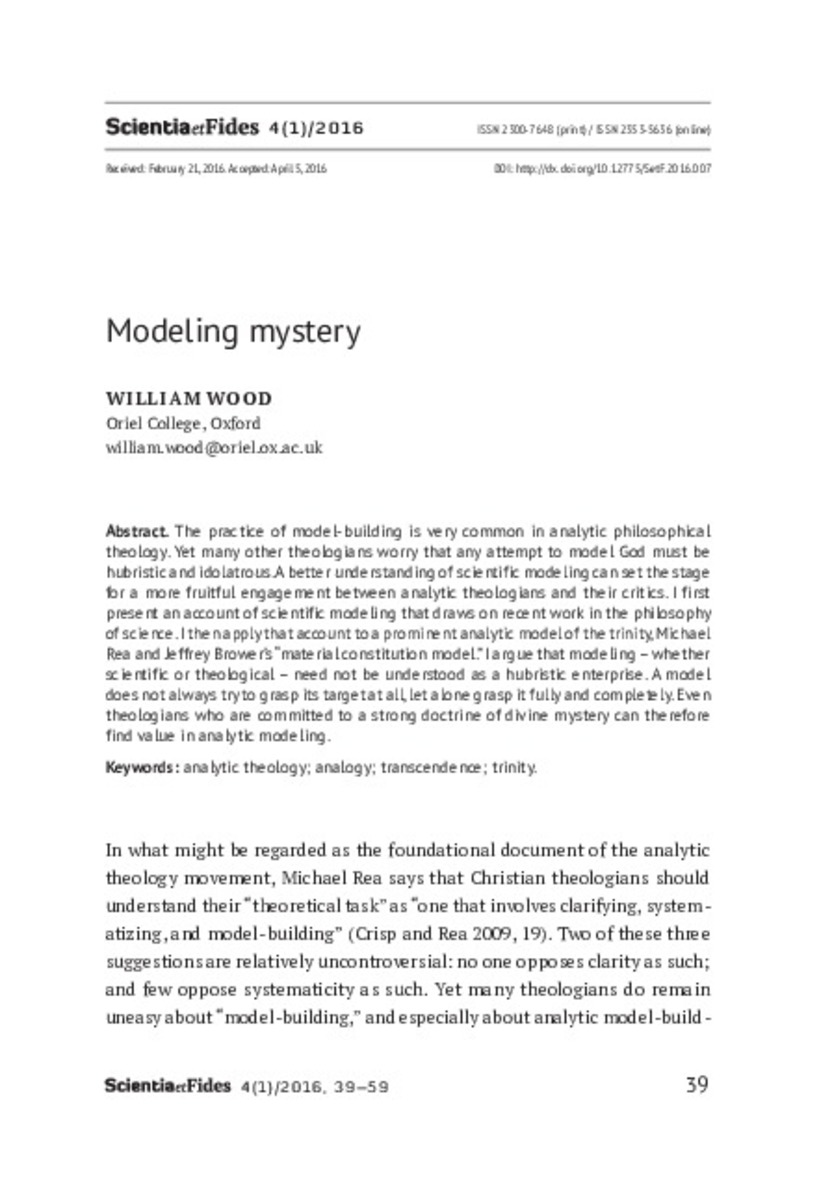Full metadata record
| DC Field | Value | Language |
|---|---|---|
| dc.creator | Wood, W (William) | - |
| dc.date.accessioned | 2016-11-10T09:56:43Z | - |
| dc.date.available | 2016-11-10T09:56:43Z | - |
| dc.date.issued | 2016 | - |
| dc.identifier.citation | Wood, W. (2016) Modeling Mystery. Scientia et Fides 4, nº 1, pp. 39-59 | es_ES |
| dc.identifier.issn | 2353-5636 | - |
| dc.identifier.uri | https://hdl.handle.net/10171/42180 | - |
| dc.description.abstract | The practice of model-building is very common in analytic philosophical theology. Yet many other theologians worry that any attempt to model God must be hubristic and idolatrous. A better understanding of scientific modeling can set the stage for a more fruitful engagement between analytic theologians and their critics. I first present an account of scientific modeling that draws on recent work in the philosophy of science. I then apply that account to a prominent analytic model of the trinity, Michael Rea and Jeffrey Brower’s “material constitution model.” I argue that modeling – whether scientific or theological – need not be understood as a hubristic enterprise. A model does not always try to grasp its target at all, let alone grasp it fully and completely. Even theologians who are committed to a strong doctrine of divine mystery can therefore find value in analytic modeling. | es_ES |
| dc.language.iso | eng | es_ES |
| dc.publisher | Servicio de Publicaciones de la Universidad de Navarra | es_ES |
| dc.rights | info:eu-repo/semantics/openAccess | es_ES |
| dc.subject | Trinity | es_ES |
| dc.subject | Analytic Theology | es_ES |
| dc.subject | Transcendence | es_ES |
| dc.subject | Analogy | es_ES |
| dc.title | Modeling Mystery | es_ES |
| dc.type | info:eu-repo/semantics/article | es_ES |
Files in This Item:
Statistics and impact
Items in Dadun are protected by copyright, with all rights reserved, unless otherwise indicated.






